Ayurvedic Detox: Panchakarma and Its Benefits
In the hustle and bustle of modern life, stress, poor diet, and environmental pollutants can take a toll on our bodies and minds. To combat these effects, Ayurveda, an ancient system of natural healing from India, offers a comprehensive detoxification process known as Panchakarma. This holistic approach not only cleanses the body but also rejuvenates the mind and spirit, promoting overall well-being. In this blog, we will take a deep dive into the Panchakarma detox process, its stages, and its numerous benefits for both body and mind.
What is Panchakarma?
Panchakarma, derived from the Sanskrit words “Pancha” (meaning five) and “Karma” (meaning actions or treatments), refers to five primary procedures intended to cleanse the body of toxins (Ama) and restore balance. It is a cornerstone of Ayurvedic therapy, aimed at removing impurities, balancing the doshas (Vata, Pitta, Kapha), and rejuvenating the body’s tissues.
The Five Stages of Panchakarma
Panchakarma involves a series of five distinct treatments, each targeting different aspects of detoxification and healing. These stages are:
- Vamana (Therapeutic Vomiting)
- Virechana (Purgation)
- Basti (Enema Therapy)
- Nasya (Nasal Administration)
- Raktamokshana (Bloodletting)
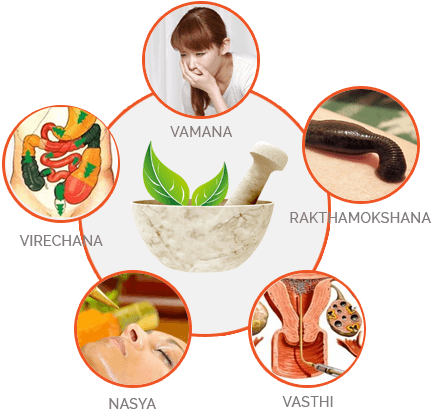
1. Vamana (Therapeutic Vomiting)
Vamana is designed to expel toxins from the body through induced vomiting. This treatment is particularly beneficial for Kapha-dominated conditions such as asthma, bronchitis, and chronic sinusitis. The process begins with pre-treatment procedures that include internal and external oleation (Snehana) and sweating (Swedana) to loosen toxins.
Benefits of Vamana:
- Clears respiratory tract congestion
- Improves digestion and metabolism
- Balances Kapha dosha
- Relieves symptoms of allergies and chronic colds
2. Virechana (Purgation)
Virechana involves the use of herbal laxatives to cleanse the intestines and purify the blood. It is especially effective for Pitta-related disorders, including skin conditions, jaundice, and gastrointestinal problems. The pre-treatment phase for Virechana also includes oleation and sweating to prepare the body.
Benefits of Virechana:
- Detoxifies the liver and gallbladder
- Promotes healthy bowel movements
- Reduces skin inflammation and allergies
- Balances Pitta dosha
3. Basti (Enema Therapy)
Basti is considered the most important part of Panchakarma due to its profound impact on Vata dosha. It involves the administration of medicated oils or decoctions through the rectum. There are two main types of Basti: Anuvasana (oil enema) and Niruha (decoction enema).
Benefits of Basti:
- Relieves constipation and bloating
- Treats arthritis and joint pain
- Improves nervous system function
- Balances Vata dosha
4. Nasya (Nasal Administration)
Nasya therapy involves the administration of medicated oils or powders through the nasal passages. This treatment is particularly effective for Kapha and Vata-related disorders affecting the head and neck regions. Nasya begins with a gentle massage and steaming of the face, followed by the administration of nasal drops.
Benefits of Nasya:
- Clears sinus congestion
- Enhances mental clarity and cognitive function
- Relieves headaches and migraines
- Improves respiratory health
5. Raktamokshana (Bloodletting)
Raktamokshana is a specialized detoxification procedure aimed at purifying the blood. It involves the removal of a small amount of blood to eliminate toxins and balance the doshas. This treatment is particularly beneficial for Pitta-related conditions such as skin disorders and hypertension.
Benefits of Raktamokshana:
- Purifies the blood and removes toxins
- Reduces skin inflammation and infections
- Lowers high blood pressure
- Balances Pitta dosha
The Panchakarma Process: Preparatory and Post-Treatment Stages
Panchakarma is not just about the five main treatments; it also includes crucial preparatory and post-treatment stages to ensure the body is properly cleansed and rejuvenated.
Preparatory Stage: Purva Karma
Before the main Panchakarma treatments, the body needs to be prepared to ensure maximum effectiveness. This stage, known as Purva Karma, includes:
- Snehan (Oleation): This involves the application of medicated oils both internally and externally to loosen toxins. Internal oleation might include the consumption of ghee or other herbal oils, while external oleation involves oil massages (Abhyanga).
- Swedana (Sudation or Sweating): Swedana therapy induces sweating to open up the channels of elimination. This can be achieved through steam baths or using herbal decoctions.
These preparatory steps help mobilize the toxins and bring them into the digestive tract, where they can be effectively eliminated during the main treatments.
Post-Treatment Stage: Paschat Karma
After the main Panchakarma procedures, the body undergoes a phase of rejuvenation and restoration, known as Paschat Karma. This stage includes:
- Dietary Guidelines: A specific diet is prescribed to help restore digestive strength and balance the doshas. This diet typically starts with light, easily digestible foods and gradually progresses to more substantial meals.
- Lifestyle Recommendations: Patients are advised to follow certain lifestyle practices to maintain the benefits of Panchakarma. This might include regular exercise, meditation, and avoiding stressful situations.
- Rasayana (Rejuvenation Therapy): Herbal supplements and tonics are given to rejuvenate the body and boost immunity.
Benefits of Panchakarma
Panchakarma offers a multitude of benefits that go beyond simple detoxification. Its holistic approach addresses the root causes of health issues, promoting overall well-being. Here are some of the key benefits:
Physical Benefits
- Detoxification: Panchakarma effectively removes accumulated toxins (Ama) from the body, leading to improved organ function and overall health.
- Improved Digestion: By cleansing the digestive tract, Panchakarma enhances the body’s ability to absorb nutrients and eliminates digestive disorders.
- Weight Management: Panchakarma helps in balancing metabolism and reducing excess body fat, aiding in weight management.
- Enhanced Immunity: The detoxification and rejuvenation processes boost the immune system, making the body more resilient to infections and diseases.
Mental and Emotional Benefits
- Stress Reduction: The calming and restorative practices of Panchakarma, including massages and herbal treatments, significantly reduce stress and anxiety.
- Improved Mental Clarity: Detoxifying the body also helps in clearing the mind, leading to better concentration and mental clarity.
- Emotional Balance: Panchakarma helps release emotional toxins, promoting a sense of peace and emotional stability.
Long-Term Health Benefits
- Chronic Disease Prevention: Regular Panchakarma treatments can help prevent chronic diseases by maintaining the balance of doshas and removing toxins.
- Anti-Aging Effects: The rejuvenation therapies in Panchakarma slow down the aging process, keeping the skin healthy and youthful.
- Hormonal Balance: Panchakarma helps in regulating hormones, which can be beneficial for conditions like thyroid imbalances, menstrual disorders, and menopausal symptoms.
Conclusion
Panchakarma is a profound Ayurvedic detoxification process that offers a comprehensive approach to health and wellness. By addressing the root causes of imbalances in the body and mind, Panchakarma provides lasting benefits that enhance overall well-being. Whether you are looking to detoxify your body, improve your digestion, reduce stress, or simply rejuvenate your system, Panchakarma can be an effective and transformative therapy.
Incorporating Ayurvedic principles into your lifestyle, including periodic Panchakarma treatments, can lead to a healthier, more balanced life. Embrace the wisdom of Ayurveda and experience the profound benefits of Panchakarma for yourself. As you embark on this journey of self-care and healing, remember that true health is a harmonious balance of body, mind, and spirit.


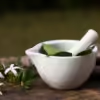
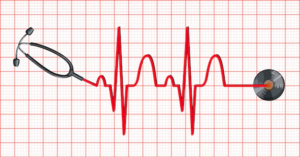
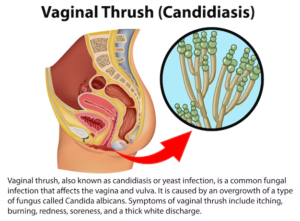
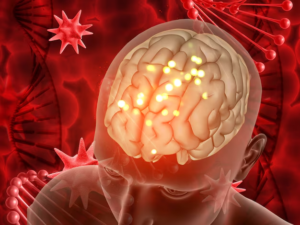
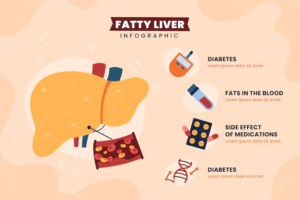
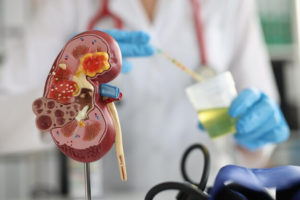
Leave a reply